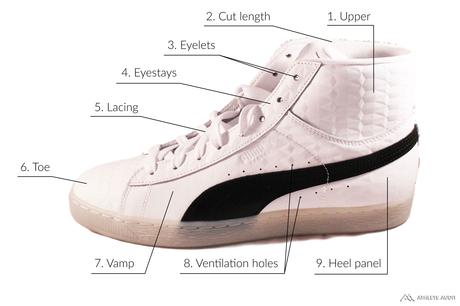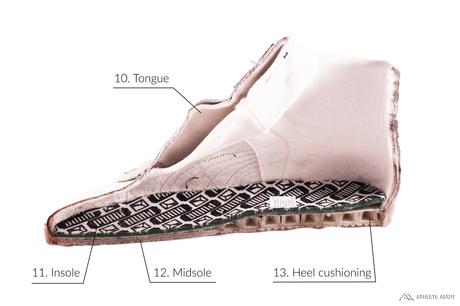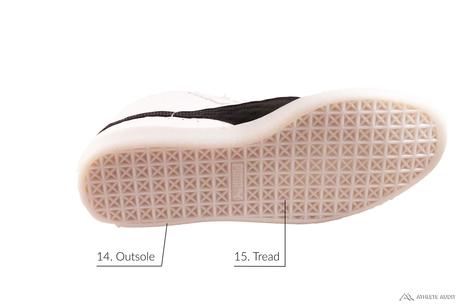Parts of a Basketball Shoe



- Upper – Can be made out of a variety of materials, such as leather, synthetic mesh, synthetic leather, canvas, etc.
- Cut length – Basketball shoes come in low-cuts, mid-tops, and high-tops, each offering differing levels of mobility and ankle support
- Eyelets – Small holes in the eyestay keeps laces in place
- Eyestays – Keeps laces and eyestays in place
- Lacing – Laces are very common although straps, velcro, zippers, and hook-and-loop closure systems can also used
- Toe – The very end of the shoe, some basketball shoes make use of a toe guard for added durability
- Vamp – The part of the shoe behind the toe that covers the forefoot and midfoot, should be flexible
- Ventilation holes – Provides some breathability to eliminate excess moisture
- Heel panel – Covers the heel portion of the shoe
- Tongue – Often thin but padded for comfort
- Insole – Essentially a bed for your feet, provides comfort and support. Some are removable so you can add your own
- Midsole – Fits in-between the insole and outsole. Is often thinner in the forefoot and thicker in the heel
- Heel cushioning – Many basketball shoes have some form of heel cushioning for shock absorption, such as air bubbles, gel cushioning, etc.
- Outsole – The rubber sole of a basketball shoe. It’s very durable and provides superior traction on slick indoor courts
- Tread – Most use herringbone tread that is flat and non-protruding for the most contact on indoor courts. May have flex grooves for flexibility

